Caryn
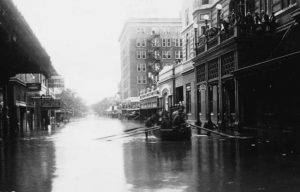 As the world watches, with sadness, the news of the flooding in Houston from Hurricane Harvey, I am reminded of another Texas flood that severely damaged a Texas city. This flood wasn’t from a hurricane exactly, but rather like Harvey, the flooding occurred because of too much rain for the ground to handle. Early that September, the remnants of a Category 1 hurricane brought heavy rains to areas of Mexico, as well as the state of Texas, particularly in the San Antonio area. On September 4, a tropical cyclone had developed in the southwestern Gulf of Mexico near the Bay of Campeche. It moved slowly in a general westward direction. Then, the storm reached hurricane intensity on September 7 prior to making landfall south of Tampico, Mexico the following day. The storm weakened over land, and lost cyclonic characteristics later that day, but a nearby high-pressure area forced the remnants of the system northward into Texas. So it was that was on September 7, 1921 in San Antonio, Texas, after some of the heaviest rainfall ever recorded in Texas…at least up to that time…dumped an astounding 23.11 inches of rain in the San Antonio area in less than a day.
As the world watches, with sadness, the news of the flooding in Houston from Hurricane Harvey, I am reminded of another Texas flood that severely damaged a Texas city. This flood wasn’t from a hurricane exactly, but rather like Harvey, the flooding occurred because of too much rain for the ground to handle. Early that September, the remnants of a Category 1 hurricane brought heavy rains to areas of Mexico, as well as the state of Texas, particularly in the San Antonio area. On September 4, a tropical cyclone had developed in the southwestern Gulf of Mexico near the Bay of Campeche. It moved slowly in a general westward direction. Then, the storm reached hurricane intensity on September 7 prior to making landfall south of Tampico, Mexico the following day. The storm weakened over land, and lost cyclonic characteristics later that day, but a nearby high-pressure area forced the remnants of the system northward into Texas. So it was that was on September 7, 1921 in San Antonio, Texas, after some of the heaviest rainfall ever recorded in Texas…at least up to that time…dumped an astounding 23.11 inches of rain in the San Antonio area in less than a day.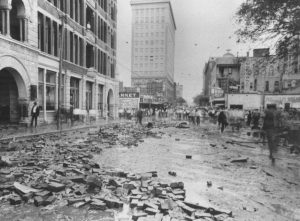
In some areas of Texas, the rainfall was even worse, but those areas somehow didn’t have the same potential for devastating floods. The precipitation peaked over Central Texas, where the highest rainfall amount measured was 40 inches near Thrall, Texas. This was the fourth highest tropical cyclone-related rainfall total in Texas since record keeping began. Similarly, an observation of 36.40 inches elsewhere in Williamson County, Texas ranked as the sixth-highest tropical cyclone-related rainfall total for the state. The high precipitation totals set nationwide records which would stand for several years. Like Hurricane Harvey, that storm stalled and the rain just kept coming.
The immense amount of rain quickly overwhelmed the San Antonio River that winds through southwest Texas. The area is usually pretty dry, but on that September day, the storm that stalled over Taylor, Texas was a 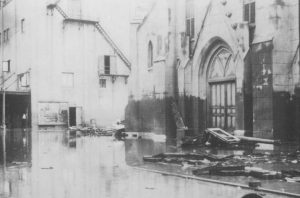 recipe for disaster. It was the heaviest single day of rainfall in the state to that time. Taylor is located 30 miles upstream from San Antonio, so when the flash flood came barreling down, it took aim on San Antonio with a vengeance. Most of the 51 flood victims were trapped in their cars by the surprise flood and drowned. Much like Houston, five to ten feet of water submerged the city’s streets, delaying an evacuation. The city was under water for nearly a week following the flood. The flood damage amounted to at least $5 million in damages in the small city that was San Antonio, at that time. In the aftermath, San Antonio embarked on a 10 year overhaul of its levee system, not knowing for sure that it would really help, but I guess they did what they knew to do.
recipe for disaster. It was the heaviest single day of rainfall in the state to that time. Taylor is located 30 miles upstream from San Antonio, so when the flash flood came barreling down, it took aim on San Antonio with a vengeance. Most of the 51 flood victims were trapped in their cars by the surprise flood and drowned. Much like Houston, five to ten feet of water submerged the city’s streets, delaying an evacuation. The city was under water for nearly a week following the flood. The flood damage amounted to at least $5 million in damages in the small city that was San Antonio, at that time. In the aftermath, San Antonio embarked on a 10 year overhaul of its levee system, not knowing for sure that it would really help, but I guess they did what they knew to do.
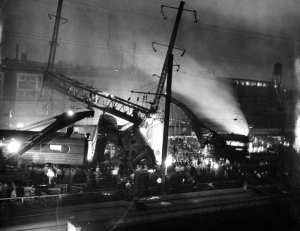 I always thought that train travel was similar to air travel, and accidents were not very common. Unlike air travel, train derailments are really quite common, mostly because they are like flat tires on cars…they do happen, and depending on how fast you’re going and where you are, it can be a minor delay, or a major problem. Having a flat tire in your own driveway is no big deal, but when a tire explodes on the highway…that’s a major problem. Blowouts have been known to cause terrible accidents and deaths. Now, consider that there are over 170,000 miles of railroad track in the United States. The possibilities suddenly seem endless. The good news is that many of these “derailments” are very minor and bring no injury or death, but that is not always the case. Speed plays a huge role in the outcome of a derailment, and I don’t mean that the train was necessarily speeding, just that it was going faster than the slow, “in the yard” pace.
I always thought that train travel was similar to air travel, and accidents were not very common. Unlike air travel, train derailments are really quite common, mostly because they are like flat tires on cars…they do happen, and depending on how fast you’re going and where you are, it can be a minor delay, or a major problem. Having a flat tire in your own driveway is no big deal, but when a tire explodes on the highway…that’s a major problem. Blowouts have been known to cause terrible accidents and deaths. Now, consider that there are over 170,000 miles of railroad track in the United States. The possibilities suddenly seem endless. The good news is that many of these “derailments” are very minor and bring no injury or death, but that is not always the case. Speed plays a huge role in the outcome of a derailment, and I don’t mean that the train was necessarily speeding, just that it was going faster than the slow, “in the yard” pace.
When high speed trains first came out, they seemed pretty risky, and maybe they were, but it was only because engineers weren’t used to those speeds, and possibly the equipment wasn’t ready for those speeds 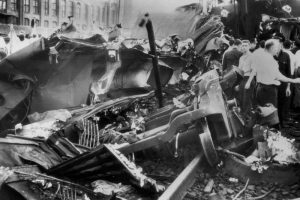 either. That would become all to obvious on September 6, 1943, when an apparent defect in an older car attached to the train, combined with the placement of a signal gantry resulted in a deadly accident. The train was called the Congressional Limited and was a newly designed train that carried its passengers through the Northeast corridor at the previously unheard-of speed of 65 miles per hour. The Congressional Limited was traveling between New York City and Washington DC, and had just left Philadelphia. It began to pick up speed as it moved northeast out of the city, The dining car, that had just been added, began to experience axle problems. That day, there were so many customers seeking to ride from Washington to New York that it was decided that another dining car should be added to the train…a car of an older design. Observers near the track reported that the axle of that older car was burning and throwing off sparks. Two miles further down the track, in Frankford Junction, Pennsylvania, the axle fell off, derailing the dining car.
either. That would become all to obvious on September 6, 1943, when an apparent defect in an older car attached to the train, combined with the placement of a signal gantry resulted in a deadly accident. The train was called the Congressional Limited and was a newly designed train that carried its passengers through the Northeast corridor at the previously unheard-of speed of 65 miles per hour. The Congressional Limited was traveling between New York City and Washington DC, and had just left Philadelphia. It began to pick up speed as it moved northeast out of the city, The dining car, that had just been added, began to experience axle problems. That day, there were so many customers seeking to ride from Washington to New York that it was decided that another dining car should be added to the train…a car of an older design. Observers near the track reported that the axle of that older car was burning and throwing off sparks. Two miles further down the track, in Frankford Junction, Pennsylvania, the axle fell off, derailing the dining car.
The derailment happened just as the train was approaching a signal gantry…a steel structure built right next to 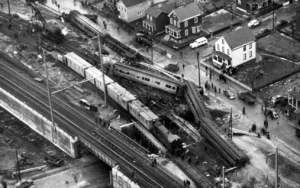 the tracks. The gantry sliced right through the dining car, instantly killing many of the passengers on that car. Seven more cars were pulled off the tracks by the dining car. In addition to the 79 people who lost their lives, almost 100 more were seriously injured. The train was carrying 541 passengers that day, many of whom were World War II soldiers returning from leave…probably the reason that an additional dining car was needed. A subsequent inquiry placed more of the blame on the location of the signal gantry than the decision to add the old dining car to the speedy new Congressional Limited, which doesn’t make sense to me, because if the axel hadn’t fallen off, the derailment would not have happened at all, and the gantry had been there for a long time.
the tracks. The gantry sliced right through the dining car, instantly killing many of the passengers on that car. Seven more cars were pulled off the tracks by the dining car. In addition to the 79 people who lost their lives, almost 100 more were seriously injured. The train was carrying 541 passengers that day, many of whom were World War II soldiers returning from leave…probably the reason that an additional dining car was needed. A subsequent inquiry placed more of the blame on the location of the signal gantry than the decision to add the old dining car to the speedy new Congressional Limited, which doesn’t make sense to me, because if the axel hadn’t fallen off, the derailment would not have happened at all, and the gantry had been there for a long time.
 On September 22, 2016, I was contacted by a man on Ancestry.com who told me that we were researching some of the same people. He said they were people who had signed the famous Snyder Friendship Quilt. Well, since I had never heard of it before, I wasn’t too sure how famous it was, but his question intrigued me, so I had to check it out for myself. I looked at the site he sent me to, and I was very intrigued. The quilt was a known as a friendship quilt, and they were quite popular in times past. This quilt, called the Snyder Quilt, is made with varying red floral tones and white contrast. It has 72 blocks in it. The thing that makes it a friendship quilt is that the friends of the quilter write their name on the blocks. On this quilt, 63 of the 72 blocks have signatures.
On September 22, 2016, I was contacted by a man on Ancestry.com who told me that we were researching some of the same people. He said they were people who had signed the famous Snyder Friendship Quilt. Well, since I had never heard of it before, I wasn’t too sure how famous it was, but his question intrigued me, so I had to check it out for myself. I looked at the site he sent me to, and I was very intrigued. The quilt was a known as a friendship quilt, and they were quite popular in times past. This quilt, called the Snyder Quilt, is made with varying red floral tones and white contrast. It has 72 blocks in it. The thing that makes it a friendship quilt is that the friends of the quilter write their name on the blocks. On this quilt, 63 of the 72 blocks have signatures.
For me, there were two things that I found exciting. The first was that eleven of the signatures had the last name Shaw, which is one of the family names in my mom’s family history. I knew that I would be researching those people to see if we are related. The second thing that was exciting is that there were three signatures of famous people…”Abraham Lincoln President of US America 1865″, “Mrs Abraham Lincoln”, and “General US Grant” had each signed a quilt block. At this point, my mind was racing. I wondered if the Shaws on the quilt  could be family, and how well they knew President Lincoln, who has always been a man who interested me. That was almost a year ago.
could be family, and how well they knew President Lincoln, who has always been a man who interested me. That was almost a year ago.
The names that are repeated several times are Snyder, Shaw, and Readon. Some of the other last names on the quilt are Thomson, Russell, Fuller, Suderly, and Schoonmaker. The name Snyder is on the quilt thirteen times and the name Shaw appears eleven times. All of the different names on the quilt got my family history wheels turning, and I knew I would have to get busy and find out if any of the people who had signed the quilt were people who were related to us. My research would prove quite fruitful, but as with any research of one’s ancestry, the going was slow. I really expected to find the connection to the Shaw side of the family, and I think I will at some point, but what really surprised me was that I found out the Abraham Lincoln is my 7th cousin, 3 times removed; and that Mary Todd Lincoln is my 4th cousin 4 times removed; both on the Spencer side of my family!!
There is some speculation as to whether the Lincoln signatures are authentic, and I can see why. On the quilt, Abraham Lincoln is spelled Abraham Lincon. I’m not going to try to debate the authenticity, but I will go so far 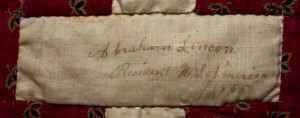 as to say that since my job requires me to sign my name multiple times during the day, I have actually signed my name so quickly that I have misspelled it, and had to insert a letter into it. I know that sounds odd, but try signing your name over and over for years, and see if you don’t make a mistake or two. By this time, Lincoln was the President of the United States, and so had to sign his name a lot too. You can believe what you want to, but I have chosen to believe that the Snyder Quilt is authentic, because I can’t see any purpose in the Snyder family lying about it. Their friends would know the truth, and the quilt would have had no real value.
as to say that since my job requires me to sign my name multiple times during the day, I have actually signed my name so quickly that I have misspelled it, and had to insert a letter into it. I know that sounds odd, but try signing your name over and over for years, and see if you don’t make a mistake or two. By this time, Lincoln was the President of the United States, and so had to sign his name a lot too. You can believe what you want to, but I have chosen to believe that the Snyder Quilt is authentic, because I can’t see any purpose in the Snyder family lying about it. Their friends would know the truth, and the quilt would have had no real value.
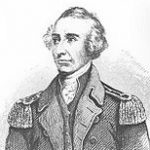 As with any war, there are opinions that are polar opposites from each other. After all, if they all agreed, there would be no need for war. The Revolutionary War was no different. Yes, the British wanted to keep the United States as colonies belonging to the crown, but the people of the United States would have none of it…well, most of the people anyway. It seems shocking to us now, to think that there would be people in the United States who would want us to remain under Britain’s rule, but in fact, there were. They were known as the Loyalists, and they set about doing whatever they could to cause the United States to lose the Revolutionary War.
As with any war, there are opinions that are polar opposites from each other. After all, if they all agreed, there would be no need for war. The Revolutionary War was no different. Yes, the British wanted to keep the United States as colonies belonging to the crown, but the people of the United States would have none of it…well, most of the people anyway. It seems shocking to us now, to think that there would be people in the United States who would want us to remain under Britain’s rule, but in fact, there were. They were known as the Loyalists, and they set about doing whatever they could to cause the United States to lose the Revolutionary War.
Patriot, Lieutenant Colonel Francis “The Swamp Fox” Marion was fresh from a victory at Nelson’s Ferry on the Santee River in South Carolina on August 20, 1780. Marion, who was just five feet tall, won fame and the “Swamp Fox” nickname for his ability to strike and then quickly retreat into the South Carolina swamps without a trace. Marion used irregular methods of warfare and is considered 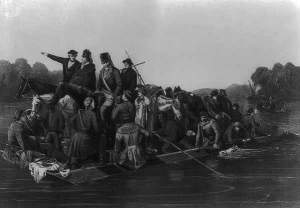 one of the fathers of modern guerrilla warfare and maneuver warfare, and is credited in the lineage of the United States Army Rangers. After the victory at Nelson’s Ferry, Marion and 52 of his militiamen rode east in order to escape the pursuing British Loyalists. They were successful, but during their escape, a second and much larger, force of Loyalists led by Major Micajah Ganey, attacked the militia from the northeast. Marion’s advance guard, led by Major John James, defeated Ganey’s advance guard and Marion ambushed the rest, causing Ganey’s main body of 200 Loyalists to flee in panic. The success of Marion’s militia broke the Loyalist stronghold on South Carolina east of the PeeDee River and attracted another 60 volunteers to the Patriot cause.
one of the fathers of modern guerrilla warfare and maneuver warfare, and is credited in the lineage of the United States Army Rangers. After the victory at Nelson’s Ferry, Marion and 52 of his militiamen rode east in order to escape the pursuing British Loyalists. They were successful, but during their escape, a second and much larger, force of Loyalists led by Major Micajah Ganey, attacked the militia from the northeast. Marion’s advance guard, led by Major John James, defeated Ganey’s advance guard and Marion ambushed the rest, causing Ganey’s main body of 200 Loyalists to flee in panic. The success of Marion’s militia broke the Loyalist stronghold on South Carolina east of the PeeDee River and attracted another 60 volunteers to the Patriot cause.
Marion rarely committed his men to frontal warfare, which was much more risky, but repeatedly surprised larger bodies of Loyalists or British regulars with quick surprise attacks and equally quick withdrawal from the  field. He was considered almost a ghost. Marion had previously earned fame as the only senior Continental officer in the area to escape the British following the fall of Charleston on May 12, 1780. His military strategy, while odd for the time, was really advanced for the time, and similar to some of today’s strategies. Marion took over the South Carolina militia force, first assembled by Thomas Sumter in 1780. Sumter returned home to bring Carolina Loyalists’ style terror tactics on the Loyalists who burned his plantation. After being wounded, Sumter withdrew from active fighting. Marion replaced him and teamed up with Major General Nathaniel Greene, who arrived in the Carolinas to lead the Continental forces in October 1780. Together, they are credited with pulling a Patriot victory from the jaws of defeat in the southern states.
field. He was considered almost a ghost. Marion had previously earned fame as the only senior Continental officer in the area to escape the British following the fall of Charleston on May 12, 1780. His military strategy, while odd for the time, was really advanced for the time, and similar to some of today’s strategies. Marion took over the South Carolina militia force, first assembled by Thomas Sumter in 1780. Sumter returned home to bring Carolina Loyalists’ style terror tactics on the Loyalists who burned his plantation. After being wounded, Sumter withdrew from active fighting. Marion replaced him and teamed up with Major General Nathaniel Greene, who arrived in the Carolinas to lead the Continental forces in October 1780. Together, they are credited with pulling a Patriot victory from the jaws of defeat in the southern states.

 No parent is really ready for their child to start dating. You expect that there will be a long line of possible spouses that come through the doors of your home. You somehow never expect the first person they date, to become a fixture in your life, and most of the time you would be right, but when our daughter, Corrie Petersen met her now husband, Kevin Petersen, it was love at first sight. She never had any doubt that this was a forever kind of love, but Kevin became so much more to our family. Looking back, I still find myself just amazed at how Kevin seemed to instantly “fit” into our family. In fact, he fit so well, that he became like a son to Bob and me too, and since it has been almost 25 years now, I guess my 15 year old daughter knew love when she found it.
No parent is really ready for their child to start dating. You expect that there will be a long line of possible spouses that come through the doors of your home. You somehow never expect the first person they date, to become a fixture in your life, and most of the time you would be right, but when our daughter, Corrie Petersen met her now husband, Kevin Petersen, it was love at first sight. She never had any doubt that this was a forever kind of love, but Kevin became so much more to our family. Looking back, I still find myself just amazed at how Kevin seemed to instantly “fit” into our family. In fact, he fit so well, that he became like a son to Bob and me too, and since it has been almost 25 years now, I guess my 15 year old daughter knew love when she found it.
Kevin told me once that my younger daughter, Amy Royce was the little sister he never had. Kevin showed me just how much he loved both of my girls, when he would come to pick them up for school almost everyday until Corrie got her license…she was after all, 15 years old when they started dating, so she couldn’t drive. He never made Amy ride the bus. She was included too, because she was his little sister. I still see that with Kevin, in the way he teases Amy, or comments on her Facebook page, or just when they are talking. Kevin has been her brother longer that she ever lived without him in her life. That really makes him more her brother, than her brother-in-law. I couldn’t have asked for a better “brother” for Amy either. They are very close, and that is a blessing for both of them. They each became the sibling the other was missing, not because they didn’t have a sibling of their own, because they did, but Kevin didn’t have a sister, and Amy didn’t have a brother.
Kevin has had some health struggles over the past few years, and that has made it difficult for him to do the projects that he loves, whether it be cars or around the house. Still, he doesn’t give up. He may have to rest more often than he used to, but he just takes it one step at a time, and soon the project is done. Of course, it 
 doesn’t hurt that Kevin and Corrie have two sons, Chris and Josh, who can come to help their dad with some of the things he needs help with. It not only gets the project done, but allows Kevin, and Corrie too, to see their very busy boys, who now have a place of their own. Kevin is such a family man, it really blesses him when the boys are willing to come and help him, even if he wishes he didn’t need help. Sometimes though, we all have to accept a little help from those around us, whether we like it or not. Today is Kevin’s birthday. Happy birthday Kevin!! Have a great day!! We love you!!
doesn’t hurt that Kevin and Corrie have two sons, Chris and Josh, who can come to help their dad with some of the things he needs help with. It not only gets the project done, but allows Kevin, and Corrie too, to see their very busy boys, who now have a place of their own. Kevin is such a family man, it really blesses him when the boys are willing to come and help him, even if he wishes he didn’t need help. Sometimes though, we all have to accept a little help from those around us, whether we like it or not. Today is Kevin’s birthday. Happy birthday Kevin!! Have a great day!! We love you!!
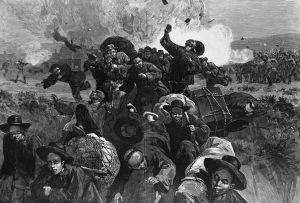 In 1885, coal miners in Rock Springs, Wyoming Territory were trying to unionize, and were trying to strike for better working conditions, but the Union Pacific Railroad company had been besting them in their efforts for a long time. In those days, the companies often had the advantage over the workers. Working conditions suffered as a result of this disadvantage. Unions and companies were constantly at odds, for obvious reasons. I suppose that in any business, there are good and bad people. Sometimes, when people come into power in an organization, corruption follows. The companies of that time didn’t want to do what was necessary to make working in the mines safe, and as most people know, underground mining can be a very dangerous occupation. The chance of cave ins or explosions exists in even the safest mines, as well as having poisonous gasses leaking into the limited air supply, bringing death to the miners.
In 1885, coal miners in Rock Springs, Wyoming Territory were trying to unionize, and were trying to strike for better working conditions, but the Union Pacific Railroad company had been besting them in their efforts for a long time. In those days, the companies often had the advantage over the workers. Working conditions suffered as a result of this disadvantage. Unions and companies were constantly at odds, for obvious reasons. I suppose that in any business, there are good and bad people. Sometimes, when people come into power in an organization, corruption follows. The companies of that time didn’t want to do what was necessary to make working in the mines safe, and as most people know, underground mining can be a very dangerous occupation. The chance of cave ins or explosions exists in even the safest mines, as well as having poisonous gasses leaking into the limited air supply, bringing death to the miners.
The situation took a deadly turn on September 2, 1885, when 150 white miners brutally attacked their Chinese coworkers, killing 28 and wounding 11 others, while driving several others out of town. The Chinese weren’t really the problem, except that they were hard workers, and so the company had initially decided to bring them in as strikebreakers. The Chinese workers showed very little interest in the miners’ union, and I’m sure this 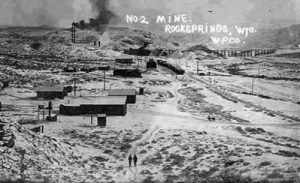 made the rest of the miners very angry. The miners became outraged by a company decision to allow the Chinese miners to work in the richest coal mines, and before long, the situation turned into a mob of white miners deciding to strike back by attacking the small area of Rock Springs known as Chinatown.
made the rest of the miners very angry. The miners became outraged by a company decision to allow the Chinese miners to work in the richest coal mines, and before long, the situation turned into a mob of white miners deciding to strike back by attacking the small area of Rock Springs known as Chinatown.
When the Chinese saw the white miners coming, most of them abandoned their homes and business, running for the hills. Those who failed to get out in time were brutally beaten, and 28 of them, beaten to death. One week later, on September 9, United States troops escorted the surviving Chinese back into the town where many of them returned to work. I guess they were either very loyal, desperate for the money, or had no other real choices, because I can’t imagine going back to work in that situation. Eventually the Union Pacific fired 45 of the white miners for their roles in the massacre, but no effective legal action was ever taken against any of the participants…no repercussion for the brutal murder of 28 Chinese men.
I wound never agree with murder, but it was also wrong to use the Chinese in this way. By bringing them in as strikebreakers, the Union Pacific Railroad effectively caused the anti-Chinese sentiment that was shared by 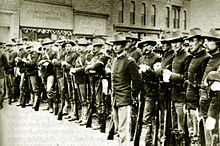 many, and began to come to the West in the mid-nineteenth century, fleeing famine and political upheaval in their own country. The Chinese were many Americans at that time. The Chinese had been victims of prejudice and violence ever since they first widely blamed for all sorts of social ills. They were also singled-out for attack by some national politicians who popularized strident slogans like “The Chinese Must Go” and helped pass an 1882 law that closed the United States to any further Chinese immigration. The Rock Springs massacre was just another symptom in this climate of racial hatred, violent attacks against the Chinese in the West became all too common. But, the Rock Springs massacre was the worst, both for its size and savage brutality.
many, and began to come to the West in the mid-nineteenth century, fleeing famine and political upheaval in their own country. The Chinese were many Americans at that time. The Chinese had been victims of prejudice and violence ever since they first widely blamed for all sorts of social ills. They were also singled-out for attack by some national politicians who popularized strident slogans like “The Chinese Must Go” and helped pass an 1882 law that closed the United States to any further Chinese immigration. The Rock Springs massacre was just another symptom in this climate of racial hatred, violent attacks against the Chinese in the West became all too common. But, the Rock Springs massacre was the worst, both for its size and savage brutality.
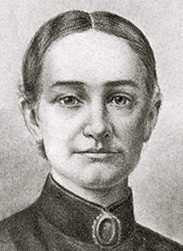 The old West was a rugged, unforgiving place, and for a long time it was thought to be a man’s place, and completely unsafe for women. Men went west, mined for gold, and came home to their families. A man would have to be insane to bring his wife and children to the West. Nevertheless, it was really only a matter of time before someone decided that the west was going to be settled, and it was going to take both men and women to settle the West…otherwise it was always going to be a job site and not a home. Someone had to make the first move, and I can imagine how the parents of those first women must have felt when their daughters told them they were moving out west. It must have been like thinking, “who was this idiot their daughter has married!” Of course, women had come as far as the Rocky Mountains, so going further wasn’t that strange, but it was still the unknown.
The old West was a rugged, unforgiving place, and for a long time it was thought to be a man’s place, and completely unsafe for women. Men went west, mined for gold, and came home to their families. A man would have to be insane to bring his wife and children to the West. Nevertheless, it was really only a matter of time before someone decided that the west was going to be settled, and it was going to take both men and women to settle the West…otherwise it was always going to be a job site and not a home. Someone had to make the first move, and I can imagine how the parents of those first women must have felt when their daughters told them they were moving out west. It must have been like thinking, “who was this idiot their daughter has married!” Of course, women had come as far as the Rocky Mountains, so going further wasn’t that strange, but it was still the unknown.
On this day in 1836, Narcissa Whitman arrived in Walla Walla, Washington, becoming one of the first Anglo women to settle west of the Rocky Mountains. Narcissa and Marcus Whitman, along with their close friends Eliza and Henry Spalding, had departed from New York earlier that year on the long overland journey to the far western edge of the continent. These days, that trip can be 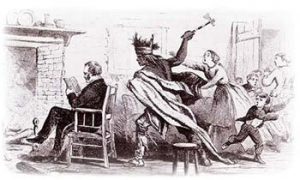 made in a matter of hours, but in those days, it took lots of planning and months to accomplish such a trip. The two couples were missionaries, and Narcissa wrote that they were determined to convert the “benighted ones” living in “the thick darkness of heathenism” to Christianity. I guess there was no specific word for Indians, or Native Americans back then, or she just liked her version better. Mission work was one of the big reasons for heading west…besides land, and gold, of course.
made in a matter of hours, but in those days, it took lots of planning and months to accomplish such a trip. The two couples were missionaries, and Narcissa wrote that they were determined to convert the “benighted ones” living in “the thick darkness of heathenism” to Christianity. I guess there was no specific word for Indians, or Native Americans back then, or she just liked her version better. Mission work was one of the big reasons for heading west…besides land, and gold, of course.
That summer when they crossed the continental divide at South Pass, Narcissa and Eliza became the first Anglo-American women in history to travel west of the Rocky Mountains. I suppose it was like going to another planet to the women, who went with no real idea of what they would be facing in the new frontier. Toward the end of their difficult 1,800 mile journey, the two couples split up, with the Spaldings heading for Idaho while 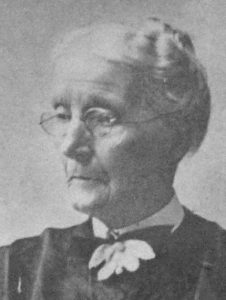 Narcissa and her husband traveled to a settlement near present-day Walla Walla, Washington, where they established a mission for the Cayuse Indians. I can only imagine how the two women must have felt, knowing that it would be a very long time before they had the company of another Anglo woman. For 11 years the couples’ missionary work went well, and they succeeded in converting many of the Cayuse to Christianity. Then in 1847, a devastating measles epidemic swept through the area, killing many of the Cayuse, who had no immunity to the disease, while leaving most of the white people at the mission suspiciously unharmed. Convinced that the missionaries or their god had cursed them with an evil plague, a band of the Cayuse Indians attacked the mission and killed 14 people, including Narcissa and her husband on November 29, 1847. Narcissa Whitman thus became not only one of the first white women to live in the Far West, but also one of the first white women to die there too. She was just 39 years old at the time she was murdered.
Narcissa and her husband traveled to a settlement near present-day Walla Walla, Washington, where they established a mission for the Cayuse Indians. I can only imagine how the two women must have felt, knowing that it would be a very long time before they had the company of another Anglo woman. For 11 years the couples’ missionary work went well, and they succeeded in converting many of the Cayuse to Christianity. Then in 1847, a devastating measles epidemic swept through the area, killing many of the Cayuse, who had no immunity to the disease, while leaving most of the white people at the mission suspiciously unharmed. Convinced that the missionaries or their god had cursed them with an evil plague, a band of the Cayuse Indians attacked the mission and killed 14 people, including Narcissa and her husband on November 29, 1847. Narcissa Whitman thus became not only one of the first white women to live in the Far West, but also one of the first white women to die there too. She was just 39 years old at the time she was murdered.
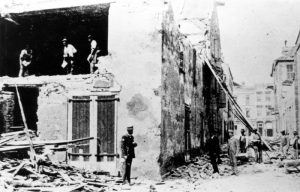 For some reason, there are certain areas on the United States, and the world, where earthquakes are…unexpected. There are just no real fault lines in these places, and no man-made reasons for it, like mining or drilling. So often people think they live in an area that is completely safe from an earthquake. Nevertheless, that does not mean that an earthquake can’t happen, as the people of Charleston, South Carolina found out on August 31, 1886.
For some reason, there are certain areas on the United States, and the world, where earthquakes are…unexpected. There are just no real fault lines in these places, and no man-made reasons for it, like mining or drilling. So often people think they live in an area that is completely safe from an earthquake. Nevertheless, that does not mean that an earthquake can’t happen, as the people of Charleston, South Carolina found out on August 31, 1886.
The first indicator that something strange was going on, came on August 27 and 28, when foreshocks were felt in Summerville, South Carolina, where my first cousin once removed, Stephanie Willard and her family live. While the tremors were odd, the people of the area didn’t think they were a warning for what was coming. Then, at 9:51pm on August 31, the rumbling began. The 7.6 magnitude quake was felt as far away as Boston, Chicago and Cuba. Buildings as far away as far away as Ohio and Alabama were damaged. But, it was Charleston, South Carolina, that took the biggest hit from the quake. Almost all of the buildings in town were seriously damaged. About 14,000 chimneys fell from the earthquake’s shaking. It caused multiple fires, and 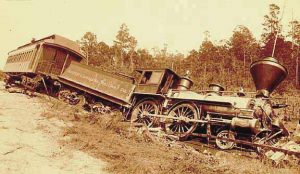 water lines and wells were ruptured. The total damage was in excess of $5.5 million, which would be about $112 million today.
water lines and wells were ruptured. The total damage was in excess of $5.5 million, which would be about $112 million today.
While that was a disaster in itself, it was the loss of life that was felt the worst. More that 100 people lost their lives that fateful day, and countless others were injured, in what is still the largest recorded earthquake in the history of the southeastern United States. The quake damaged as many as 2,000 buildings, including buildings as far away as central Alabama, central Ohio, eastern Kentucky, southern Virginia and western West Virginia. The strange part about this quake is the fact that there were no apparent surface cracks as a result of this tremor, railroad tracks were bent in all directions in some locations. Acres of land were liquefied. This quake remained a mystery for many years since there were no known underground faults for 60 miles in any direction. Then, as science and detection methods got better, scientists have recently uncovered a concealed fault along the coastal plains of Virginia and the Carolinas. While this fault is now known, scientists think that another quake of this magnitude remains highly 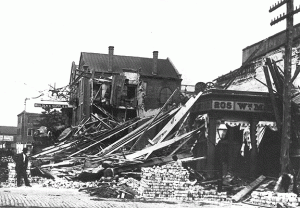 unlikely, though not impossible, in this location.
unlikely, though not impossible, in this location.
I guess I don’t quite understand that concept, except to say that if it is the only fault and has nothing to connect to, maybe there is less chance of a small tremor turning into a big quake, and maybe that is why they don’t expect another quake of that magnitude. Still, it is always good advise to realize that no place is immune to earthquakes. Oklahoma has found that out in recent years, as underground mining work has created quake situations that weren’t there before. It is still my hope that the Charleston area never has another quake like the one they had in 1886.

 Last night as my husband, Bob and I were heading out for our evening walk at about 7:15pm, we were met by a concerto of song coming from the pine tree in our next door neighbor’s yard. Of course, it was the birds settling down for the night, since it was heading into the evening hours. I was immediately reminded of the day of the total eclipse that Casper had just been in the center of. As the sky grew darker, the birds began hurrying to and fro in search of their places for the night. They began singing their evening songs, just as they were doing when we stepped out of our front door last night. Birds, of course, are programmed to begin bedtime preparations as the daylight starts to fade, unlike humans who might not go to sleep until the wee hours of the morning.
Last night as my husband, Bob and I were heading out for our evening walk at about 7:15pm, we were met by a concerto of song coming from the pine tree in our next door neighbor’s yard. Of course, it was the birds settling down for the night, since it was heading into the evening hours. I was immediately reminded of the day of the total eclipse that Casper had just been in the center of. As the sky grew darker, the birds began hurrying to and fro in search of their places for the night. They began singing their evening songs, just as they were doing when we stepped out of our front door last night. Birds, of course, are programmed to begin bedtime preparations as the daylight starts to fade, unlike humans who might not go to sleep until the wee hours of the morning.
The concerto also reminded me of one of my sister, Cheryl Masterson’s favorite movies…The Sound of Music. Of course, the song they sang on that movie was The Hills Are Alive, and not The Trees Are Alive, but my imagination is allowed to make those little changes…basically taking a little poetic license, and change the wording a little bit to fit the situation. So, while I heard the melody of The Hills Are Alive, the words that sang out were The Trees Are Alive.

Since we began taking evening walks a number of years ago, we have found ourselves rather fascinated with the animal life around us. The birds flying here and there, with what appears to be no specific destination in mind; the rabbit with a broken leg that has managed to survive most of the summer, even though he can’t hop as fast as so many other rabbits; the dogs who are sure that we are their friends, even to the point of vying for our attention with the other dogs in their yard or next door; and even the deer, who stand and watch us, not moving unless we do something to appear to be coming toward them. They are all very interesting in the way they interact with people. The birds don’t seem to want to fly too far from their original spot to get away from us as we approach, almost as if they are saying, “I’m not scared of you.” The rabbits sit bravely still, hoping that we won’t notice them, sometimes allowing us to get only a foot or so away from them, providing we continue to walk along without stopping.
Animals are funny sometimes, doing things that almost seem like human activities, and even the wild animals 
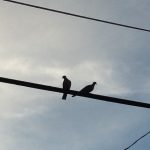 who seem to want to interact with humans…from a safe distance, anyway. The mourning doves and other birds that like to look at us from their safe perch on the power lines or light poles above us, always strike me as funny. They know we are there, and they seem curious about us, but they don’t want to get too close, after all they aren’t stupid, just curious, as they allow us to share their space. And of course, there is nature’s version of Twitter…when a large group of birds flock to one tree, and everyone is tweeting at once…as was the case when we left for our evening walk last night.
who seem to want to interact with humans…from a safe distance, anyway. The mourning doves and other birds that like to look at us from their safe perch on the power lines or light poles above us, always strike me as funny. They know we are there, and they seem curious about us, but they don’t want to get too close, after all they aren’t stupid, just curious, as they allow us to share their space. And of course, there is nature’s version of Twitter…when a large group of birds flock to one tree, and everyone is tweeting at once…as was the case when we left for our evening walk last night.

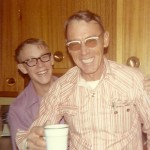 As my father-in-law, Walt Schulenberg’s birthday approached this year, I have found myself thinking a lot about the man who was like a second dad to me for 38 years. As with my parents, I still find it hard to believe that he is gone, and yet it has been more than four years already. There are many things I really miss about my father-in-law. One of the main ones would be his smile. Whenever we were at his house, he was always so genuinely happy to see us, and his smile made that so clear. He had a great sense of humor and loved to laugh. He was an experienced teaser, and since I come from a family of teasers, we always got along well. In his last years, I had the privilege of taking care of him, and I can honestly say that it was a privilege, and a blessing to be able to spend that time with him. We talked about family history a lot, and he helped me to fill in a lot of the holes in that side of the family. And we just talked about life and the past. Those were sweet times.
As my father-in-law, Walt Schulenberg’s birthday approached this year, I have found myself thinking a lot about the man who was like a second dad to me for 38 years. As with my parents, I still find it hard to believe that he is gone, and yet it has been more than four years already. There are many things I really miss about my father-in-law. One of the main ones would be his smile. Whenever we were at his house, he was always so genuinely happy to see us, and his smile made that so clear. He had a great sense of humor and loved to laugh. He was an experienced teaser, and since I come from a family of teasers, we always got along well. In his last years, I had the privilege of taking care of him, and I can honestly say that it was a privilege, and a blessing to be able to spend that time with him. We talked about family history a lot, and he helped me to fill in a lot of the holes in that side of the family. And we just talked about life and the past. Those were sweet times.
My father-in-law was always there to pitch in and lend a helping hand. He worked hard until the job was done. I always called him a workaholic, and I wasn’t kidding, nor was I wrong. He instilled that same work ethic in his children, all of whom are hard workers too. His philosophy was that you should work hard until the job was done, and done right. He believed that if a job was worth doing, it was worth doing right. He took that work ethic with him to the various job he did over the years, and each one was very sorry to see him move on.
He worked hard, but the really important thing in his life was his family. They were his top priority. He loved every baby, grandbaby, and great grandbaby with all his heart. He made toys for them, played games with them, and let them “help” with the jobs he was working on at home, teaching them the ropes as they went 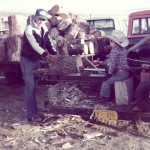
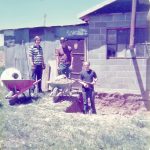 along. Every one of the kids and grandkids had a chance to help Grandpa with his work, and they all loved to be able to do so. He never made them feel like they were in the way. Of course, they most enjoyed playing with him, but what child wouldn’t? He was a dear dad and grandfather to every one of the children and grandchildren, a well as to his sons and daughters-in-law. I feel very privileged to have known him. Today would have been my father-in-law’s 88th birthday. I wish he were here so we could all celebrate it with him. Happy birthday in Heaven Dad. We love and miss you very much.
along. Every one of the kids and grandkids had a chance to help Grandpa with his work, and they all loved to be able to do so. He never made them feel like they were in the way. Of course, they most enjoyed playing with him, but what child wouldn’t? He was a dear dad and grandfather to every one of the children and grandchildren, a well as to his sons and daughters-in-law. I feel very privileged to have known him. Today would have been my father-in-law’s 88th birthday. I wish he were here so we could all celebrate it with him. Happy birthday in Heaven Dad. We love and miss you very much.

